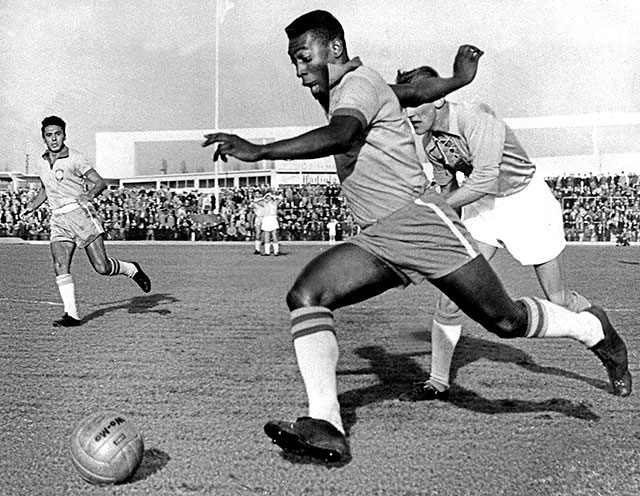How to play the 4-3-3 soccer formation
 When it comes to setting your team up for a game of football, you need to play to your strengths. Too many coaches rely on notions that they have picked up watching some of the best teams in the world or what they have read in an article. You need to look at the
When it comes to setting your team up for a game of football, you need to play to your strengths. Too many coaches rely on notions that they have picked up watching some of the best teams in the world or what they have read in an article. You need to look at the
players that are at your disposal and figure out what type of formation is best suited to your player’s strengths.
The 4-3-3 formation is very popular and is extremely focused on attacking play. Over the years, a number of the top teams have utilised this formation to win big games and tournaments, including the Brazil teams of the 1960s and recent Holland and Portuguese teams. Jose Mourinho is one of the modern coaches who often utilises this approach when it comes to getting an attacking team on the field.
Just like any formation, there are going to be pros and cons when it comes to using it, so we will explore the issue a bit further in this article and you should get a better grasp as to whether or not this formation is well suited for you team.
The overall setup of the 4-3-3 formation
The usual set up for the 4-3-3 formation is with two central defenders, a left back, right back, three central midfielders with one of these midfielders playing a holding role and a striker flanked by a left wing and right wing.
This formation will be well suited to those teams that have a strong player who can play as a defensive midfielder that holds the team and is able to whether any sustained attacks on the defence.
They will be able to disrupt opposition attacks and quickly break and support counter attacks. This players needs to be able to read the game well and be well aware of the various options that are available both when they are on the ball and off it.
The role of the wingers in the 4-3-3 formation
 When it comes to this formation, you need to have two lively wingers that are well able to spread the play wide and attack the opposition defence at great pace and precision. When they do not have possession of the ball, they need to have the fitness and ability to drop back and help out the defence.
When it comes to this formation, you need to have two lively wingers that are well able to spread the play wide and attack the opposition defence at great pace and precision. When they do not have possession of the ball, they need to have the fitness and ability to drop back and help out the defence.
They need to be strong at running and dribbling the ball as they will be running at opposition defences and using their pace to get out in front. This positon is normally physically demanding, so the player will need to be in good shape if they are to last the full game.
This formation cannot afford the wingers becoming so tired that their precision drops and they start giving way a lot of balls and slacking away from their defensive duties.
The role of the striker in this formation
 There are a number of different roles that the central striker will have to play when it comes to this formation. This all depends on the specific tactics the team are using, as well as the strengths and weaknesses of the opposition. Some teams will require the striker to be able to run in between the two opposition central defenders and provide a long, direct option for the teammates to hit with a long, direct ball.
There are a number of different roles that the central striker will have to play when it comes to this formation. This all depends on the specific tactics the team are using, as well as the strengths and weaknesses of the opposition. Some teams will require the striker to be able to run in between the two opposition central defenders and provide a long, direct option for the teammates to hit with a long, direct ball.
This will keep the defenders busy and they will often lose track of the two wingers as a result, giving them more space and time on the ball. The striker also has to offer a strong option for when an outlet is needed coming out of defence, as the two wingers will be helping out back there.
What if the opponents are playing with a high defensive line?
If the opposition defenders push further up the pitch than usual, this means that the striker will not be allowed as much scope for creating depth down the middle. As a result, the two wingers will have to play very wide and stretch the defence as much as possible. This allows for long balls to be played behind the defence and the pacey wingers can run behind and expose this space.
Pros of this formation
- Very attacking minded
- Suits teams that have a lot of pace
- Dynamic attacking options
Cons of this formation
- Not much support from the middle of the park
- When counter attacked, gaps will appear around the middle
- If attackers are lazy and don’t defend, the defence can be vulnerable
